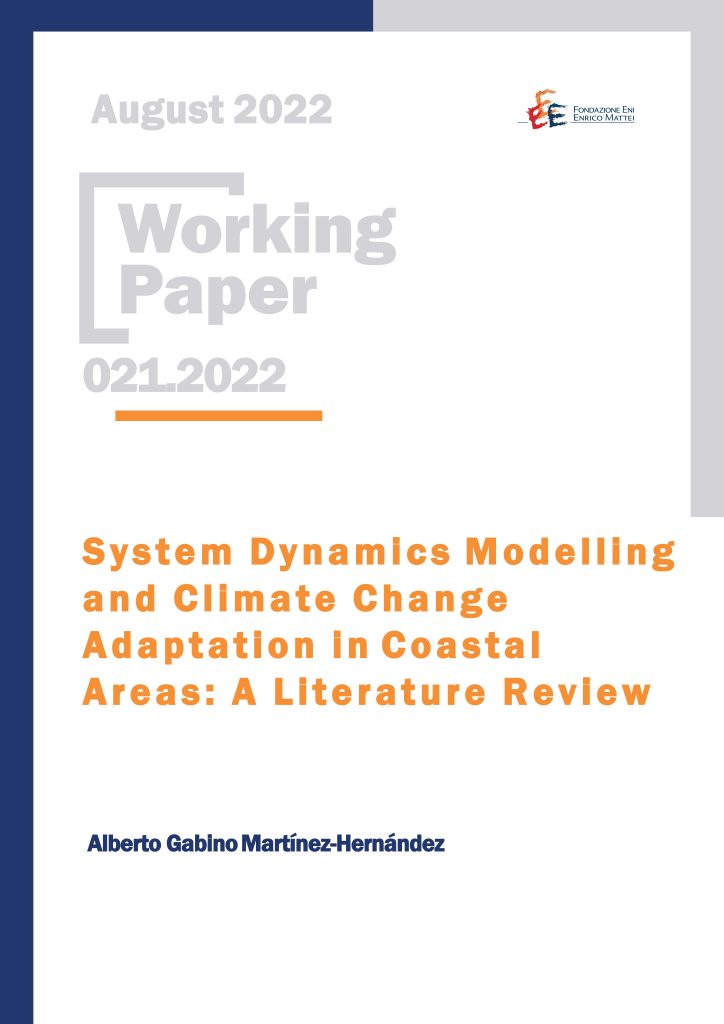System Dynamics Modelling and Climate Change Adaptation in Coastal Areas: A Literature Review

05.08.2022
Alberto Gabino Martínez-Hernández (Fondazione Eni Enrico Mattei)
C61, C63, Q54
Climate change adaptation, Coastal areas, System dynamics modelling, Environmental modelling, Literature review
Climate change impacts in coastal areas (CA) have exposed coastal ecosystems to unprecedented conditions. System dynamic modelling (SD) has been used as a powerful tool to improve climate change adaptation (CCA) strategies. However, until now there are no review papers that summarize how academic literature that employs SD modelling has addressed CCA in CA. Hence, the main objective of this study is to provide an overview of the state of the art of this field. A systematic literature review was chosen as the main method of analysis, which was complemented with a bibliometric analysis and a categorization of the main contents of the papers selected. Our results suggest that the literature is clustered in three groups: physical or social impacts, water and agriculture management, as well as ecosystem services. Following the classification of key representative risks (KRK) of the IPCC, some topics have been addressed more than others. Most papers focus on Disaster Risk Reduction (DRR) compared to adaptation to slow onset hazards. Besides, research in developing countries remains scarce, except for the case of Vietnam. One group of models seem to be in an advanced stage or abstract enough to be applied in other areas, whereas another group is better suited for local modelling. Quantitative SD modelling has been preferred compared to qualitative or mixed approaches. Finally, Stella and Vensim seem to be the most popular platforms to run simulations.
***
Suggested citation: A. G. Martínez-Hernández, ‘System Dynamics Modelling and Climate Change Adaptation in Coastal Areas: A Literature Review’, Nota di Lavoro 021.2022, Milano, Italy: Fondazione Eni Enrico Mattei
